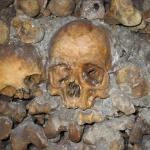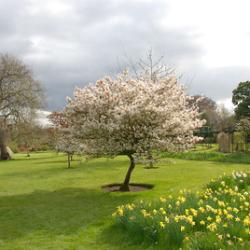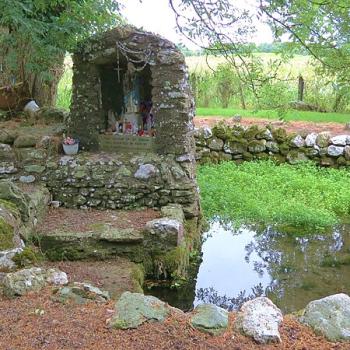What Survives Into Today

It turns out that quite a bit of the Celtic and Gaelic holiday has survived in the secular Halloween. For instance, the two popular divination methods we’ve just discussed live on as traditional Halloween party games. The Ring Gaeltacht version of devotional offerings is easily discerned in modern Trick or Treating, as is the unfortunate late night property damage. The fascination Western society has with ghosts and goblins this time of year is a direct descendant of the Samhain interactions with the dead and Otherworldly beings. One could even argue that the bonfire rite has also survived into the modern era: the nations of the British Commonwealth celebrate Guy Fawkes’ Night with bonfires every November 5th.
And so Samhain lives today, not just in the Groves and Circles of Neo-Pagans, but also hidden just below the surface of the modern Halloween. The devotional offerings may have been replaced with candy and the tricks may have gotten tamer (we should all be thankful that nobody goes around stuffing sod in our chimneys or pelting our doorways with cabbages at three in the morning), but they have been around for a very long time. So this Samhain, if you celebrate it, take a moment to reflect on what it was, what it has become, and how today’s Neo-Pagans are re-imagining it. And you can rest comfortably in the knowledge that whether you are handing out candy at your door or dancing around a bonfire, you are continuing an unbroken tradition with roots stretching back over two millennia.
And if you are one of the folks that hand out pennies or kale, take an additional moment to be thankful that today’s children seem to have forgotten about the part where they can call down a curse for receiving a bad offering.
Footnotes
- It should be noted that not all Neo-Pagan traditions put a heavy emphasis on Halloween-related festivals. In some forms of Asatru, for instance, the holiday following the Autumnal equinox is trivial, with the big festival being the Yuletide.
- Kondratiev, Alexei. The Apple Branch: A Path to Celtic Ritual. New York: Citadel Press, 2003. Print. 79-80, 112-24.
- Powell, Thomas George Eyre. The Celts: Ancient Peoples and Places. Rev. ed. New York: Frederick A. Praeger, 1958. Print. 116-9.
- Ó Duinn, Seán. The Rites of Brigid: Goddess and Saint. Blackrock: Columba Press, 2005. Print. 24, 34, 43, 150.
- Daimler, Morgan. Where the Hawthorn Grows. Winchester: Moon Books, 2012. Print. 93-101.
- Rees, Alwyn and Brinley. Celtic Heritage: Ancient tradition in Ireland and Wales. London: Thames and Hudson, 1961. Print. 83-92, 163-6.
- Caesar, C. Julius. Caesar’s Gallic War. Trans. W. A. McDevitte. Trans. W. S. Bohn. 1st Edition. New York: Harper & Brothers. 1869. Web. 23 Feb. 2016. 6.18.
- It should be noted that the same also applies to Samhain’s summer counterpart, Beltane.
- Wikipedia contributors. “Púca.” Wikipedia, The Free Encyclopedia. Wikipedia, The Free Encyclopedia, 10 Oct. 2016. Web. 10 Oct. 2016.
- Wikipedia contributors. “Samhain.” Wikipedia, The Free Encyclopedia. Wikipedia, The Free Encyclopedia, 24 Oct. 2016. Web. 24 Oct. 2016.
- Ravenna, Morpheus. The Book of the Great Queen. Richmond: Concrescent Press, 2015. Print. 25, 254.
- Meyer, Kuno (ed. and tr.). “The Adventures of Nera.” Revue Celtique 10 (1889): 212–228, 520. Corrigenda in Revue Celtique 17: 319. Web. 25 Oct. 2016.

















